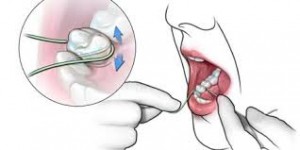We know for some time that fruit and vegetables for children are important. Now a new study from the CDC showed that not enough children eat fruit and vegetables. Researchers interviewed the parents of nearly 18,000 children ages 1 to 5 in 2021. They asked the parents what their children consumed the previous week. They paid particular attention to fruit, vegetables and sugar sweetened beverages. The results were published in the CDC’s Morbidity and Mortality Weekly Report on February 17, 2023. The results were surprising and also were published by CNN.
- Almost 50% of the children did not eat a vegetable every day and about 33% of them did not eat a fruit every day.
- 57% of the children drank at least one sugar sweetened drink per week.
- A 1-year-old child was much more likely to eat a fruit or vegetable a day and less likely to consume a sugary drink compared to the older children up to the age of 5.
Dr. Heather Hamner, a senior author of the study and a senior health scientist at the CDC stated that there were some interesting findings in different states. She said: “This is the first time we’ve had state-level estimates on these behaviors. It’s a really good time to think about the programs and policies that states have in place and areas where they can continue to work and improve to make the nutrition environment the best it can be for our young children.”
Comparison of children’s food intake state by state
Here are some of the highlights when food behaviors were compared state to state.
- More than 50% of twenty states including Washington, DC drank a sugar sweetened drink in the preceding week.
- 80% of the children in Mississippi had one sugar sweetened drink in the preceding week, the highest of all states.
- In contrast, only 38.6% of children in Maine drank a sugar sweetened drink at the same time, the lowest of all states.
- Over 50% of 20 states did not eat a vegetable every day in the preceding week.
- In Louisiana nearly 60% of the children did not consume a daily vegetable and almost 50% did not eat a daily fruit.
- On the bright side: Vermont reported the highest rate of daily consumption of fruit and vegetables among the age 1 to 5 children group.
Racial differences among children’s eating habits
The investigators analyzed food habits of black children versus Caucasian children. They found that children of black parents were less likely to eat a daily vegetable or fruit while white children were more likely to consume fruit and vegetables.
About 70% of black parents reported that their child was consuming at least one sugar-sweetened drink in the preceding week. The investigators termed the household with poor food habits “households with marginal or low food sufficiency “. In these households the children were less likely to consume a daily fruit or vegetable. At the same time, they were more likely to drink a sugar sweetened drink.
General needs of children
Children in the age group of 1 to 5 need daily fruit and vegetables for their normal development. The CDC has established some time ago that Children ages 2 or 3 should have at least a cup of fruit and a cup of vegetables every day while kids ages 4 to 8 should have 1.5 cups of each every day. The CDC report said: “Limiting or reducing foods and beverages higher in added sugars, including sugar-sweetened beverages, is important because added sugars are associated with increased risk of obesity, dental caries, diabetes, and cardiovascular disease.”
Laying a foundation for future healthy eating habits
Dr. Hamner said: “We’ve found that it can take up to 10 times for a child to try a new food before they like it,” she said. “Continuing to try and expose young children to a wide variety of fruits and vegetables is an important piece.” Another point is that parents should not only stick to fresh vegetables and fruit, but also include frozen and canned versions for greater variety.
Adding these essential vitamins is laying a strong food foundation for your child and has a lasting impact. Dr. Hamner added: “One of the things that’s really important is early dietary behaviors. This is really when kids are laying the foundation for some of those dietary behaviors, so starting out strong and making sure that they’re creating these healthy behaviors … that’s going to set them up as they go into adolescence and adulthood.”
Preventing adult food habits
A large portion of snacks from the mid-section of the grocery store contains all forms of sugar. There is high fructose corn syrup, sugar, honey, agave syrup, maple syrup etc. You may think that a harmless fruit juice would be healthy. But then you read the ingredient list on the label. It says that it contains 5 to 6 teaspoons of sugar per cup (250 ml) of juice.
Unfortunately, our body is not equipped to process all the sugar that the food industry wants us to consume, and we develop insulin resistance; the liver converts the excess sugars into fat and deposits it into our arteries and as fat deposits between our guts (visceral fat) and as subcutaneous fat in the thighs, around the hips and the waist. It is no secret that a lot of obesity is related to overconsumption of sugar containing convenience foods (snacks and sugar-laden drinks).
Artificial sweeteners
Often low-calorie alternatives contain aspartame or sucralose (Splenda). Aspartame is an excitotoxin damaging your brain cells and sucralose was developed in the 1950’s. It was a side product in the development as an insecticide. We do not want to replace disease-promoting sugar with toxins as sweeteners. Safe alternatives for sugar are xylitol, mannitol, and stevia.
Starchy foods
What is sometimes overlooked is the fact that your body digests bread, starchy foods such as potatoes, and pasta, rice and flour products like pizza or cookies within 30 minutes into sugar that is as harmful to your pancreas as plain sugar or high fructose corn syrup. The body reacts with the same overproduction of insulin converting the excess sugar into fat and depositing it in your body as described above. Much of the obesity wave we see in the past 3 decades is due to baked goods like bagels, bread, pasta and pizza. It is much better to enjoy your stevia-sweetened coffee without any bakery pieces.
When you replace some of the excess starchy foods with vegetables and fruit, you rebalance your diet and reduce the extra sugar load. When a child starts this process early in the age group of 1 to 5, healthy eating habits get imprinted, which prepares the individual for adolescence and adulthood.
Conclusion
Healthy eating is what you learn in childhood. A thorough analysis of children in the age group of 1 to 5 by the CDC showed the following. In the US children of this age consume too much sugar-containing beverages. At the same time, they avoid vegetables and fruit. They also found that 80% of the children in Mississippi had one sugar sweetened drink in the preceding week. This was the highest of all states. In contrast, only 38.6% of children in Maine drank a sugar-sweetened drink at the same time. This was the lowest of all states. In addition, they found that children of black parents were less likely to eat a daily vegetable or fruit. But white children were more likely to eat daily vegetables or fruit. About 70% of black parents reported that their child was consuming at least one sugar-sweetened drink in the preceding week.
Households with marginal or low food sufficiency
The investigators termed the households with poor food habits “households with marginal or low food sufficiency “. In these households the children were less likely to consume a daily fruit or vegetable. At the same time, they were more likely to drink a sugar sweetened drink.
The researchers concluded that early childhood behaviors were influencing the lives of adolescents and adults. Unfortunately, this influence is often negative leading to obesity and cardiovascular disease. But the opposite can also be true. Parents can use their influence on their children by increasing vegetable and fruit intake and reduce sugar-containing drinks. This helps the children to adopt healthy food habits well into adolescence and adulthood.







